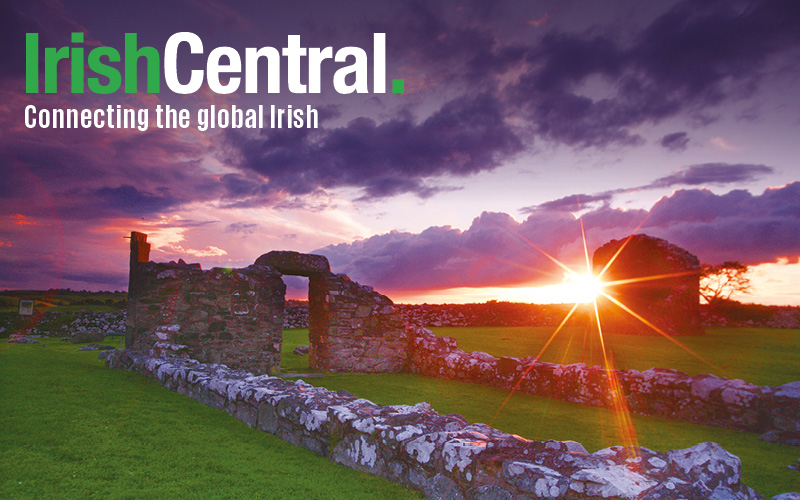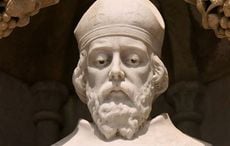At 7 a.m. on St. Patrick’s Day 1950, a plane from Ireland touched down at Idlewild (now JFK Airport in New York). Arriving there was Miss Noreen Sullivan, a kindly young nurse from Dublin’s St. Patrick’s Orphanage, the appointed guardian of the six young, Irish orphans she had crossed the Atlantic with.
Wearing little harp pins and wild shamrock attached to their lapels, the open arms of their adoptive American parents would soon greet the six children. Their names were John Francis, Mary, Angela, Bernadette, Joseph and John Patrick.
The two oldest children in the group were five years of age each and the youngest was 10-month-old baby Mary, a local press report written on their arrival day claims.
All had been placed with US-based parents who had given up hope of finding a child through their own placement agencies.
“This is a Paddy’s Day we’ll always remember,” John J. Halloran of Jamaica, Queens told the press on the arrivals day. “It’s the first parade in a long, long time that I haven’t been marching in up Fifth Avenue. I couldn’t march today because I’m a new daddy.”
Halloran and his wife adopted two of the children – John Francis, five, and Bernadette Theresa, three – and look elated in the photographs taken on the arrival day.
“We read a newspaper story about an American couple who got a child from Ireland,” Halloran explained. “We wrote the St. Patrick’s Orphanage in Dublin in December. The orphanage lawyers handled all the arrangements.”
The press report on the day claimed that five-year-old John Patrick was adopted by Mr. and Mrs. William J. Gooth of Bayville, Long Island, and after the flash bulbs flared and the story ran to press he was taken home to begin his new life as American citizen – and his story might have been lost if it were not for the lifelong interest of nurse O’Sullivan.
As it turned out, she never stopped wondering about her former charges and how they had fared in the strange new land so far away from the island they had been born in.
So in 2013, aged 93 with her eyesight failing but her faculties undiminished, O’Sullivan asked her good friend Rosaleen to write to some US-based genealogy groups on her behalf.
One letter reached the New York Irish Center in Long Island City, where genealogy group leader Bridget Bray was touched by Sullivan's late-in-life quest to discover what had happened to the children she had once chaperoned.
“Can you help?” the letter began. “Noreen Sullivan (now Patterson) is a widow who brought these children to New York on St. Patrick’s Day 1950. She prays for all every day, as she has none of her own… If there is any way to make contact she would be grateful. Her eyesight is poor but she is sharp as a tack…”
Bray, who runs genealogy workshops exploring family trees in her spare time, reached out to her group. “I posted the plea as a group project and with the help and support of our group one of the children was quickly found,” Bray told our sister publication the Irish Voice.
“We found some of the links from the original news report. We haven’t as yet found all six though.”
One of the former children they quickly found was John Patrick, later known as Bill Gooth. “Bill (William) Gooth is 71 now and lives on Long Island,” Bray says. “He actually joined us at Christmas time for our group lunch and I passed on Noreen’s request to him. He reached out to her and got to know her.”
Earlier this summer Noreen passed away at the age of 96, and Gooth traveled over to Dublin to attend her funeral.
“Doesn't this illustrate the power of connecting and over genealogy?” asks Bray. “I just placed the call and invited him to join our group meeting, but it was members of our group that found him and made it all happen! Noreen was his last living connection to his Irish life and his American life. I love stories like this!”
Read more: After 1950s forced adoption New Yorker is reunited with his Irish mother
The 1950s in Ireland was an era of widespread illegal adoptions from Irish orphanages, so it is uncommon to find the traceable origins of arriving Irish adoptees which made the detailed press report from 1950 a blessing.
“The adoptive parents were named in the article and because the press reports used only the male names of the adopting families, it made them easier to track,” Bray says.
“John Patrick then is known as Bill now but he remained in the roughly same area. He still lives on Long Island today. That helped.”
Records were often altered by Catholic agencies, Bray has learned, making points of origin much harder to track.
“Even if you had a birth certificate or the names of the adoptive parents they cut off the ability to track them. Nowadays DNA has just started to open the door they closed.”
After the group traced him, Bray simply cold-called Gooth one afternoon.
“I didn’t know what would happen,” she explains. “You don’t know how someone is going to react. It’s a very personal issue.
“So I spoke and at first he was listening, and I explained about the nurse and her letter. As I got into it he finally said, yes all that’s correct. I was so relieved.
“Then he added he had felt very blessed to have the life that he did in America. That was such a wonderful thing to hear because that is not always the case.”
Asked for his earliest memories of Ireland, Gooth doesn’t have very many.
“I have a couple of the orphanage and I remember flying from Dublin to Shannon, and then I remember running around an airport room there,” he told the Irish Voice.
Gooth later received a letter from Noreen Patterson that informed him their New York flight from Shannon was delayed because some diplomats were connecting to their flight from Paris.
There would be trips back to the land of his birth. Twenty-two years after his arrival in the United States, Gooth was in the armed services in Italy and took a European discharge to travel.
“In England I met the mother superior who had been in charge of the orphanage in Ireland when I was an orphan there. She told me I really had to go over to Dublin. I did, I knocked on the front door and they let me in,” he recalls.
It was 1972, and he was 27. “I remember a gym with glass windows all on one side. They took me to the room and opened the doors, and it was like I had never left it. It was much smaller than I remembered though.”
Gooth's adoptive parents were both in their fifties by the time he arrived in New York. “They had tried to adopt before but my mother was Catholic and my father wasn’t and that was a problem,” Gooth said.
The decision to adopt proved successful so they later adopted a girl, Bill’s sister, also from Ireland.
“They were able to give us advantages that I wouldn’t have had otherwise. They were financially set. They lived in Bayville, a beach community in Long Island,” he says
Gooth still has dear friends he made from kindergarten there. At the time Bayville had 2,000 year-round residents, but the population would swell to 10,000 in the summers. It was the golden age of rock and roll too.
“I would go out in the morning and they’d have a bell they’d ring when it was time to come home,” he laughs.
Gooth, now a daily communicant, has only positive things to say of his background and his experience. But the orphanage he was adopted from has a much more checkered past. At least 254 children were sent directly to America from St. Patrick’s, records show.
From the early 1950s to the mid 1970’s up to 97 percent of all babies born to single mothers there were adopted. Money flowed in from America, from private donations, and from the Irish government paying per capita for every single mother and baby by the week. It was what would become known as the golden era of the Catholic adoption machine.
But Gooth’s own story has had a happier outcome, and he’s of a mind to let the past lie.
“I was blessed with the life I’ve had here. I didn’t want to knock on somebody’s door and say surprise! I don’t know what happened or why it happened. End of story,” he said.
“They have their lives and if they made a mistake I don’t want to smack them in the face and say ha ha. If they want to contact me I have no animosity. I’m not mad about what happened. I don’t know what my life in Ireland would have been like if I’d stayed there.”
A year after he got married in 1979, Gooth took his new wife to visit the orphanage in Dublin.
“It was the same deal. I knocked on the door and the nuns were very hospitable to us. They showed us were I was baptized. They gave us a tour. Then four years ago I returned with my two sons, but it was gone.”
The building had been knocked down and replaced by condominiums in 1985, he discovered.
“They had problems there after I left with the abuse of kids,” says Gooth. “It was one of the reasons it was knocked down. I have no idea about it, so I can’t comment.”
Meanwhile, reconnecting with Noreen after 63 years was an unexpected delight, he says.
“I emailed her right away and we corresponded back and forth. She told me she had prayed every day for us from the day she left in 1950. She was in her early twenties then and it was her first trip to the United States. Her first time on a plane. With all these kids in tow.”
Note: the original 1950 news reports refer to the six Irish children as orphans. The reality was more complex, however. Their parents were alive and in most cases the mother had (often through coercion) signed away all legal claims to her offspring, which in a technical sense did turn them into orphans.
Read more: Groundbreaking novel shares pain and secrets of Ireland’s mother and baby homes




Comments